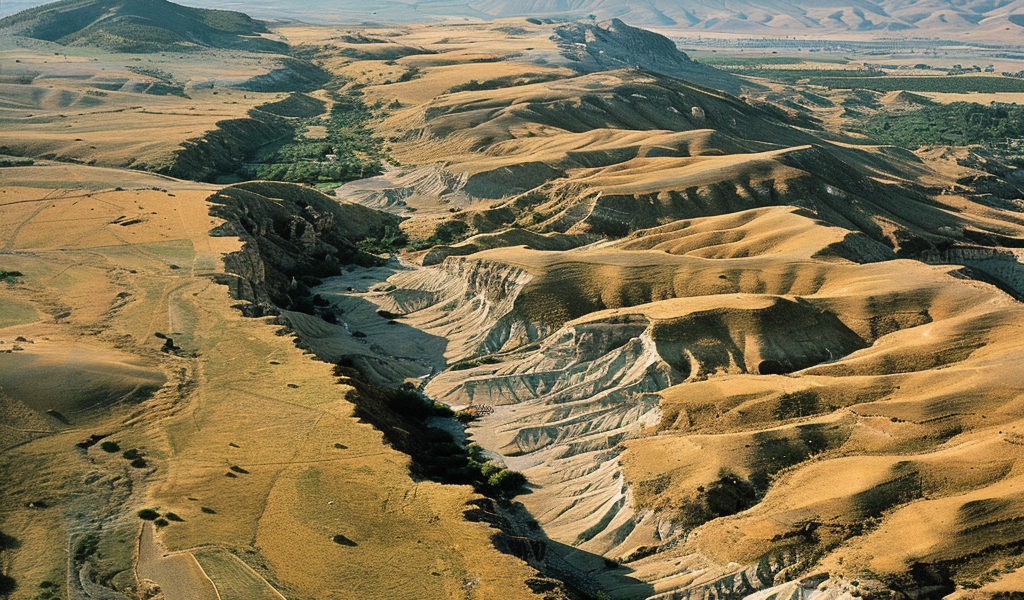Recent satellite data has revealed an intriguing geological phenomenon occurring beneath the Central Anatolian Plateau in Türkiye, specifically within the Konya Basin. This unique occurrence, described as the ‘dripping’ of Earth’s crust, has captivated scientists, prompting extensive investigation into its underlying mechanisms.
After thorough analysis and data collection, a comprehensive study has unveiled the secrets behind the mysterious subsidence of the basin. A dedicated team of earth scientists from the University of Toronto has led this groundbreaking research, shedding light on the complex dynamics of our planet’s plate tectonics.
The research team successfully integrated experimental simulations with a wide array of geological, geophysical, and geodetic data. This multi-disciplinary approach has enabled a deeper exploration of the forces that shape the Earth’s crust. By employing advanced technologies and utilizing data from various sources, the experts were able to unravel the enigma of the basin’s subsidence within the rising interior of the plateau.
Understanding Plate Tectonics
The theory of plate tectonics explains the structure and movement of Earth’s outer layer, known as the lithosphere. This layer is divided into several large and small tectonic plates that float on the semi-fluid asthenosphere beneath them. The movement of these plates is driven by convection currents generated by heat from the Earth’s core, leading to the gradual reshaping of the planet’s surface.
Significant geological events often occur at the boundaries where these tectonic plates interact. When plates separate, they create space for magma to rise, forming new crust and leading to the development of mid-ocean ridges and rift valleys. Conversely, when plates converge, one may be forced beneath another in a process known as subduction, resulting in the formation of deep ocean trenches and volcanic activity. At transform boundaries, plates slide past each other, generating friction that can trigger earthquakes.
Insights into Tectonic Dynamics
This recent research not only enhances our understanding of the tectonic processes occurring in Türkiye but also introduces a new category of plate tectonics. The findings hold significant implications, particularly for other celestial bodies that do not exhibit Earth’s typical tectonic plate system, such as Mars and Venus. By studying how similar geological processes might transpire on these planets, researchers can broaden the scope of planetary geology and enhance our understanding of the universe.
Stages of Crust Dripping
The study, published in the esteemed journal Nature Communications, identifies the primary driver behind the basin’s subsidence as a novel process termed multi-stage lithospheric dripping. This phenomenon refers to the instability present within the rocky material comprising the Earth’s crust and upper mantle, leading to a gradual ‘dripping’ effect that contributes to subsidence.
As scientists continue to investigate the mechanisms behind this geological marvel, the implications of their findings extend far beyond Türkiye. The research provides valuable insights into the behavior of Earth’s lithosphere and the complex interactions that govern geological processes. Understanding these dynamics is crucial for predicting geological events and assessing potential risks associated with tectonic activity.
The Konya Basin serves as a fascinating case study in the field of geology, offering a window into the intricate workings of our planet. As researchers delve deeper into the processes at play, the knowledge gained will not only enhance our understanding of Earth’s geology but also inform future explorations of other planets in our solar system.
With ongoing advancements in technology and data collection methods, the study of tectonic processes continues to evolve. The insights gleaned from the Konya Basin are just the beginning, paving the way for further research into the complexities of Earth’s crust and the potential for similar phenomena elsewhere in the universe.





